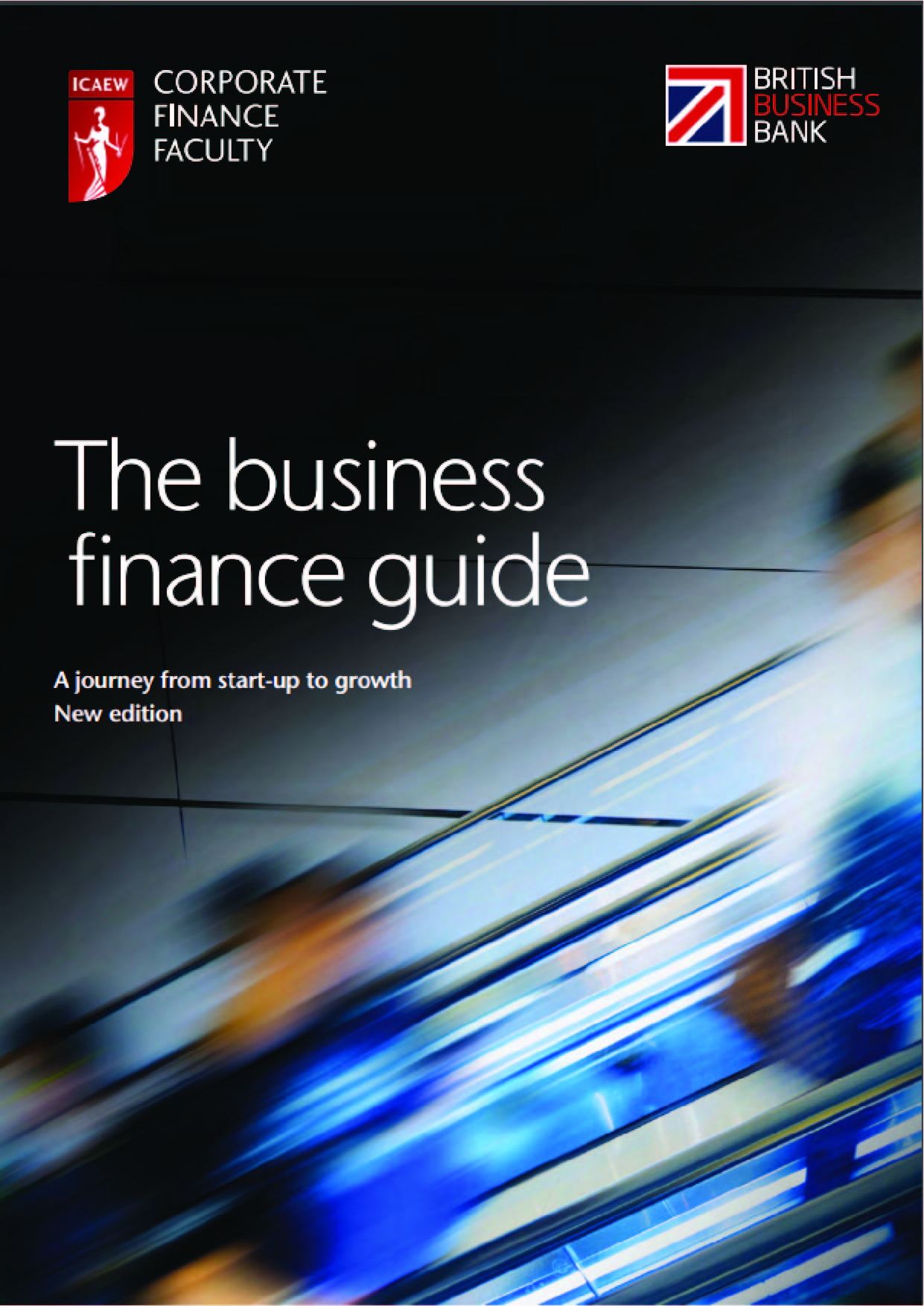Introduction
Growing a business from the first seed of an idea is not a smooth linear journey and it’s not as simple as going from A to B. The destination is seldom decided as the business idea takes form, becomes a reality and then grows into a successful enterprise. The finance journey is continuous; there may never be an arrival point.
For any business to travel on a journey it needs at all points of that journey to be appropriately financed. Businesses need to make sure there is the finance to back their growth plans. Businesses are often started on overdrafts or credit cards, or with help from friends or family or by using the family property as collateral. But soon after that the business will need to be financed so it can stand on its own two feet if it is to be a sustainably growing proposition.
This guide will be invaluable for entrepreneurs who are starting a business, directors who are running growing businesses and established companies – of all sizes – as well as for business advisers and investors.
It explains how to approach the financing decision, the questions to ask and how to treat it as a business process, so that it is not as daunting as it can sometimes seem. And if it does get daunting, good advisers can provide further guidance. This guide also provides details of where to obtain free advice on raising finance.
Once a business is up and running on the growth journey, management will need to ensure that future plans for growth can be financed. If not, there is a chance the business will fail. The table on page 09 shows the options available to, and the decisions faced by, business-owners along that journey.
On the growth journey there will undoubtedly be ups and downs. Through the life of a business, as soon as plans are made, be they looking for growth or for survival or to batten down the hatches, the finance must be in place to support those plans.
All in the prep
The work to be done in getting a business to a position where it can take on additional capital need not be too daunting a task; however, nor should it be underestimated. START by looking at the business afresh, with a questioning mind, so that the answers to the questions a potential shareholder or lender will probably raise are immediately to hand.
- Step out from your business
- Take a fresh look at prospects and challenges
- Analyse your opportunities
- Reach for the future
- Think about finance
Business plan Preparing a solid business plan is the key to securing funding. A robust business plan helps potential lenders or investors understand the vision and goals of the business. It also brings focus to management’s understanding of the business strategy. It helps them understand the risks inherent in the strategy and the impact of any deviations from their plan – particularly when it comes to funding. Information will depend on the target audience, but it should incorporate:
- an executive summary, highlighting the main points, designed to grab the attention of potential lenders or investors;
- details of key personnel, their responsibilities, skills and experience; • market analysis of the company, its products or services and its competitors; • details of current and intended client base;
- a marketing plan targeting new or existing customers;
- historical financial information covering the last three years of trading (if available) – accounts (audited if available), and key accounting ratios;
- cash-flow data, including information about standard payment terms and typical debt turn;
- financial forecasts for the next three to five years, presented as the historical information, and highlighting the key underlying assumptions;
- cash-flow forecasts covering the next two to three years (or in the case of a start-up or turnaround, until the business moves into profit), clearly highlighting the amount of funding required;
- how creditors, capital expenditure, debtors and stock will be managed over the forecast period;
- additional ‘flexed’ forecasts showing the impact of key downside scenarios, such as sales targets not being met or cost savings taking longer to come on stream, may also be included, or if required, must be included; and
- how equity investors can exit or refinance the business, and realise their investment.
Cash is king
Before looking for external capital, businesses should make sure they are managing cash effectively. Some fairly simple steps can help maximise available cash. Being able to demonstrate good cash management also sends out the right signals to potential investors or lenders. The only way cash flow can be kept under control is by understanding the ins and outs. A weekly cash-flow forecast is often essential, particularly in a growing business.
The journey
Financing a business will often involve an injection of debt and equity. This diagram shows the financing cycle, which is not necessarily a journey that will end, and so involves continuous review and reappraisal. Visit thebusinessfinanceguide.co.uk for a guide to every stage of the finance journey.
What stage is your business at?
- Pre-trading
- Pre-profit
- Profitable and growing
- Established and growing
- Established and stable
- Established but stressed
What challenges and opportunities are there?
- Initial funding
- Launch product/
service/brand - Organic sales growth
- Expand into new
markets or areas - Expand internationally
- Invest in new facilities
- Refinance/reduce cost
of borrowing - Need capital restructuring
- Improve cash position
- Acquisition plans
What financing options are available?
EQUITY
- Seed finance
- Angel finance
- Equity crowdfunding
- Venture capital
- Corporate venture capital
- Private equity
- IPO/public offering
DEBT
- Start-up loan
- Overdraft
- Bank loan/bond
- Peer-to-peer lending
- Asset-based finance
- Leasing or hire purchase
- Export or trade finance
- Growth finance
Know your options
For any entrepreneur, wherever they are on their business journey, knowing what options there are along the way is key to making successful progress. And, crucially, this applies to the financing options.
The idea that an exact route can be mapped out for a business is one road analogy too far. Running a business will throw up many new challenges: closed roads or roads that lead to dead ends, so being aware of the alternative routes is critical. You may need to take advice on directions but if you are forearmed with the knowledge that there are alternatives, the journey is far less daunting.
Do you want to learn more about business finance? Read through this book now.











